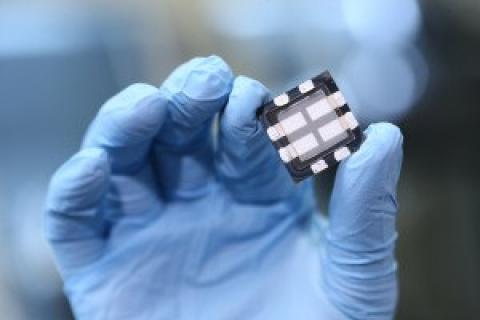Researchers at The University of Toledo (UT) in the US have developed an all-perovskite tandem solar cell with excellent conversion efficiency. The new kind of device combines two different cells to harvest different parts of the solar spectrum, resulting in increased total electrical power generated.

The team's process enables the fabrication of bottom cells using mixed Sn-Pb perovskite absorbers. The fabrication of the efficient bottom cell, which the researchers say had not been accomplished before, is what is truly innovative about this research work. 'Our all-perovskite solar cells have the so-called four-terminal structure, which stacks a wide-band-gap top cell with a low-band-gap bottom cell. The current all-perovskite tandem cells are limited by the lack of efficient bottom cell'.
The team reports efficient mixed tin-lead iodide low-band gap (â¼1.25'eV) perovskite solar cells with open-circuit voltages up to 0.85'V and over 70% external quantum efficiencies in the infrared wavelength range of 700'900'nm, delivering a short-circuit current density of over 29'mA'cm'2 and demonstrating suitability for bottom-cell applications in all-perovskite tandem solar cells. 'Our low-band-gap perovskite solar cells achieve a maximum power conversion efficiency of 17.6% and a certified efficiency of 17.01% with a negligible current'voltage hysteresis. When mechanically stacked with a â¼1.58'eV band gap perovskite top cell, our best all-perovskite 4-terminal tandem solar cell shows a steady-state efficiency of 21.0%,' they write in the paper.
The results of this research could have significant impact on the design of the next generation of solar cells. In addition, the team says that it is now working to further improve the performance of these bottom cells and the performance of the tandem cells, including both four-terminal and two-terminal ones.

